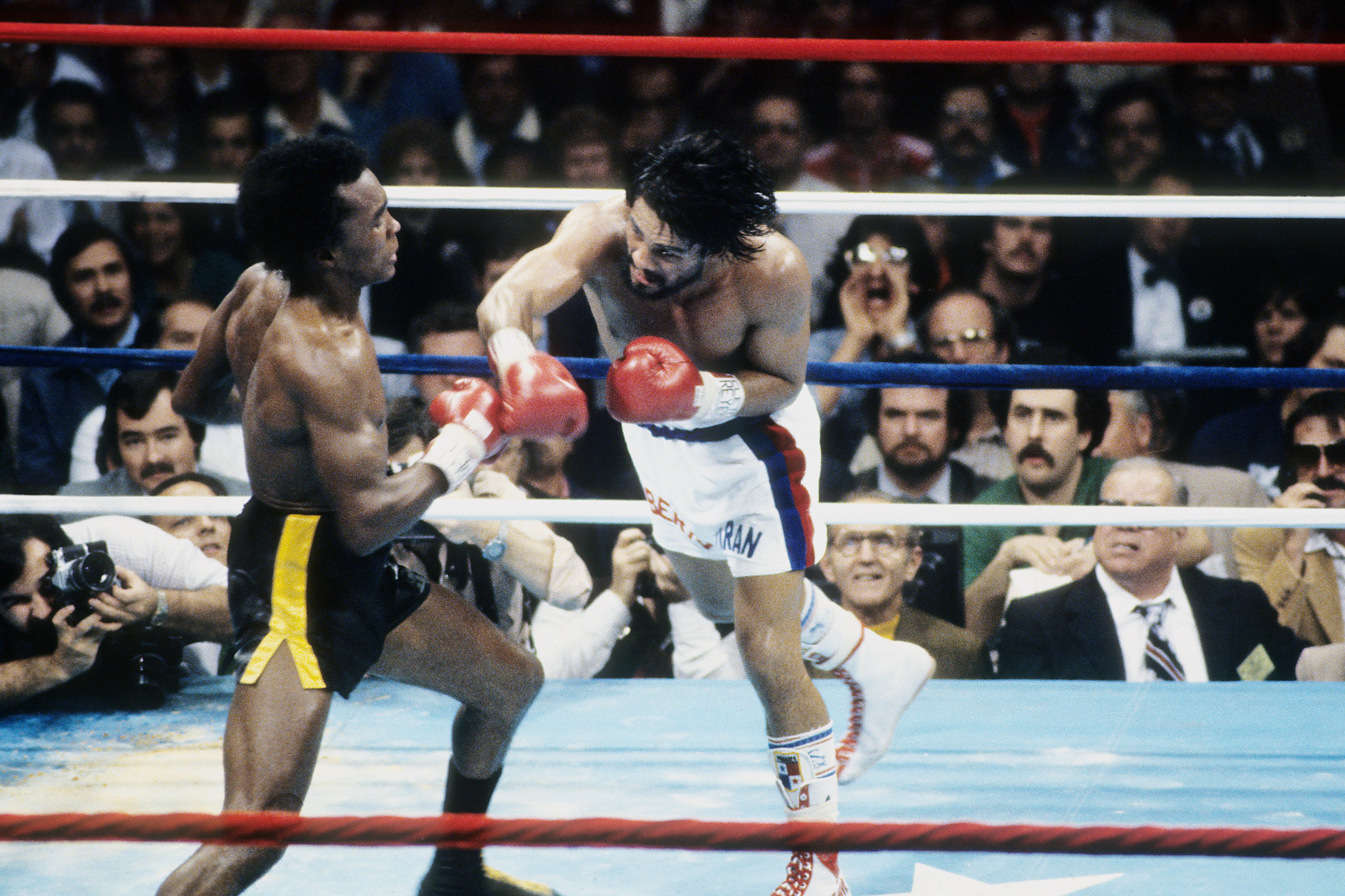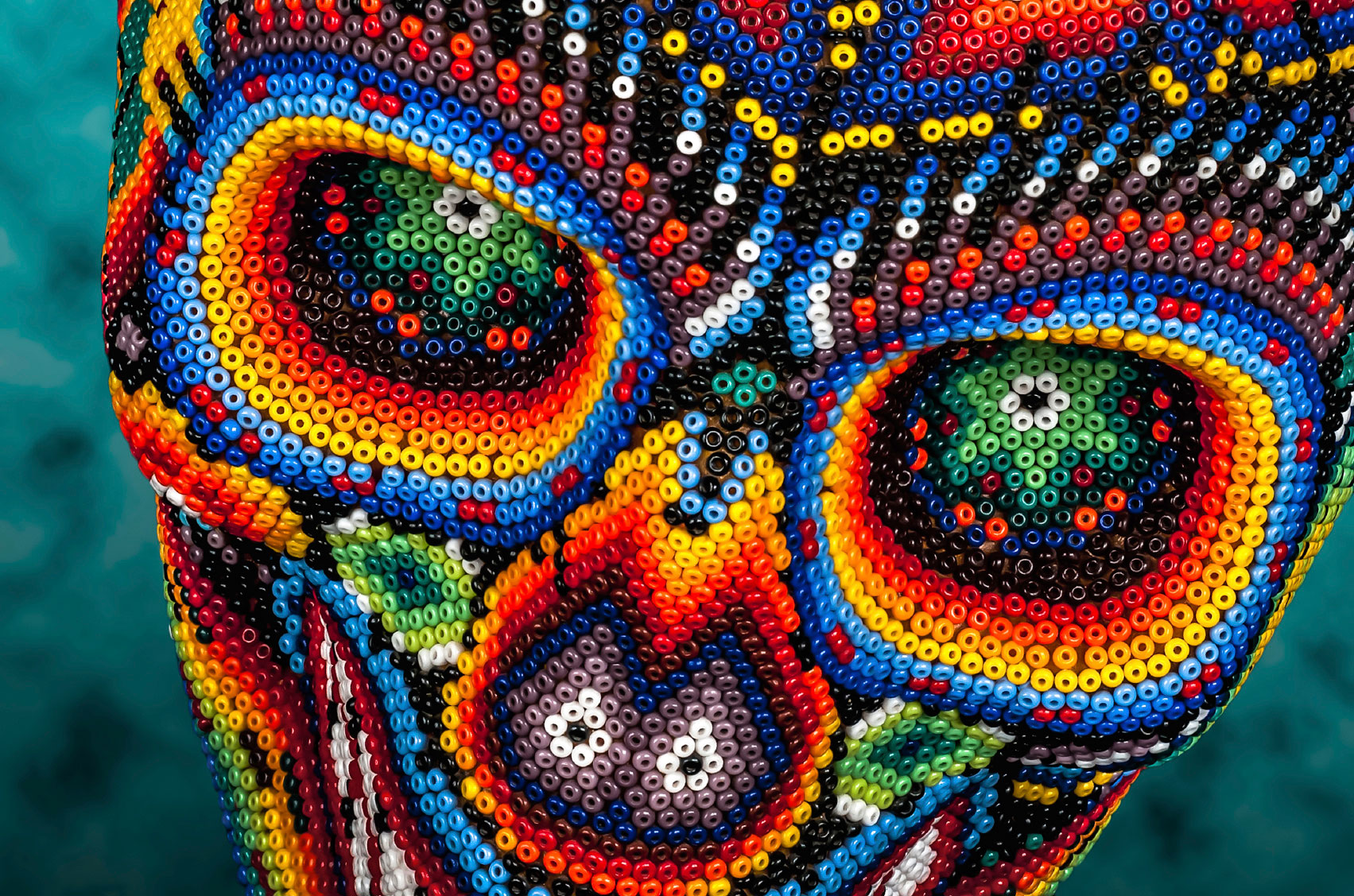Born to a Mexican-American marine and a Panamanian mother and raised in the Chorrillo slum of Panama City, in 1951, Roberto Duran quit school after third grade and hit the streets. His father went back to California early in Duran’s life, and the young Roberto shined shoes and sold newspapers to help his family. In his early teens, he started boxing, emulating his brother and hoping his fists might punch a way out of the barrio.
Duran would make his professional debut in February 1968, at just 16 years of age and win via a unanimous decision. He would go on to win his next bout by a first-round knockout. And the next six the very same way. The fight game revolves around rumors of the “next” so-and-so—the next Ali, the next Marciano. Word quickly spread about the next Sugar Ray Robinson KO’ing his way through Central America. Small, ferocious, and multidimensional, Duran moved in the ring like an assassin. His head movement was second to none. His footwork precise, and he had great defensive skill, that was often overlooked because of his brutal power. He seemingly came by it all naturally. His longtime trainer, Ray Arcel, often said, “I never taught him anything.”

Duran would rattle off 30 wins in a row before his first pro loss, and in 1972, he got his first title shot, against lightweight world champion Ken Buchanan. The fight took place at Madison Square Garden, and Buchanan was a heavy favorite. “Buchanan was in his prime,” Farrell recalls, “and Duran beat him to a pulp. It was the kind of beating that a great old pro would know how to administer.”
Despite losing a non-title fight a few months after the Buchanan bout, Duran successfully defended his world title 12 times. He owned the lightweight division for six years. He was earning money he’d always dreamt of. But it wasn’t enough. His appetite craved more—more money, more fame, more everything. So in 1979, he relinquished his belt and jumped to the welterweight division that offered bigger paydays and higher-profile opponents. Enter Sugar Ray Leonard.
Leonard, gifted, good-looking, and charismatic, was the gold-medal darling of American sports in the late ’70s. While Leonard was good in his own right, he had yet to be really tested, add to that many in boxing circles felt, there was too much glitter. That Leonard was a disco-era circus act, complete with a 100-watt smile and too much dancing around the ring. In Duran’s eyes, and in those of many Latinos, Leonard’s anointing felt unjust, based purely on the fluff of celebrity rather than the elegant calculus of boxing and self-reliance. The “Brawl in Montreal” was scheduled for June 20, 1979. Duran must have relished the delicious irony of the bout’s setting—the same city where Leonard had enjoyed his 1976 Olympic triumph. Duran, snubbing his nose at the U.S. flag-waving media, refused to speak English in the build-up to the fight, and the French-Canadian public loved him for it, and they inspired him to a 15-round unanimous decision that shocked the world.
David Avila, a journalist who grew up in an East L.A. boxing family, recalls the fight as a watershed moment. “When Duran beat Sugar Ray Leonard, who was perceived as ‘America’ by a lot of the Latinos, who were subservient in everything at that time, it was huge,” Avila says. “He was a no-nonsense, take-no-prisoners kind of guy,” Avila says. “We loved him for that. He was macho, very macho.” After growing up with nothing, Duran now had everything. He embraced the trappings of it all, building a reputation for chasing women, drinking, appearing as Rocky Balboa’s sparring partner in Rocky II. He quickly ballooned up, and when the Leonard rematch rolled around six months later, he wasn’t prepared.

Leonard, on the other hand, had learned his lesson in Montreal – do notstand toe-to-toe with Duran. “He felt those hands of stone and knew he couldn’t go in and try to be macho with him,” says former welterweight world champion Jose Rivera, who studied both fights as a young trainee. In the second fight, Leonard moved and danced, evading Duran and getting under hia skin. In the 8th round of a close fight, Duran had enough. “No mas,” he muttered. Duran has attributed it to weakness from his drastic weight loss, but most boxing people believe he simply rejected Leonard’s clownishness. “To me, it’s Duran saying ‘Fuck you. If you want to fight me, I’ll fight you. But I’m not going to let this clown embarrass me,’” Farrell says. “I see it as a gutsy thing to do.”


